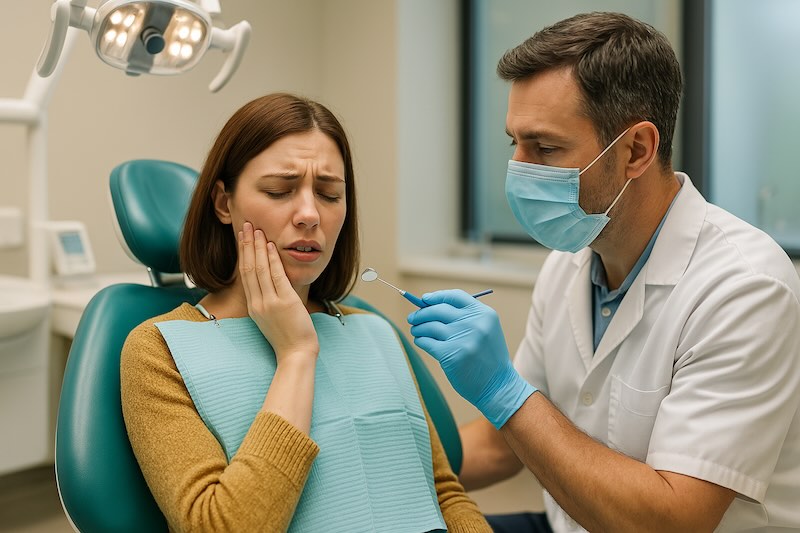
Dental Emergencies: Immediate Steps and When to See a Dentist
Dental Emergencies: What to Do When You Need Immediate Care
Dental emergencies can be alarming and are often accompanied by significant pain. Quick intervention is crucial to relieve discomfort and improve the chances of saving your tooth.
Common causes of dental emergencies include physical trauma, teeth grinding, or biting into hard items, which can lead to fractured or broken teeth. Additionally, dental restorations such as fillings and crowns can loosen or fall out completely. If you’re experiencing intense pain, it’s critical to seek immediate dental care, as untreated dental problems typically worsen and may pose serious health risks.
Here’s a helpful guide on identifying and handling different types of dental emergencies:
1. Knocked-Out Tooth (Avulsed Tooth)
If a tooth is completely knocked out, urgent dental care is essential. The tissues, nerves, and blood vessels supporting the tooth can be severely damaged, but prompt action may enable the tooth to reattach successfully.
Steps to take immediately:
- Contact your dentist right away.
- Pick up the tooth carefully by its crown (the top part), avoiding touching the root.
- Gently rinse the tooth under warm water.
- If possible, gently place the tooth back into its socket. If that’s not feasible, tuck it inside your cheek.
- If neither option is possible, store the tooth in milk, saliva, or water (as a last resort) to prevent drying.
- Visit your dentist as quickly and safely as possible.
The dentist will attempt to reposition the tooth. If there’s significant internal damage, root canal therapy might be necessary.
2. Lost Filling or Crown
Fillings or crowns often become loose while eating. Losing one can make the affected tooth highly sensitive to temperature and pressure. Typically, crowns loosen due to decay beneath them, causing shape changes in the tooth.
Steps to manage a lost crown or filling:
- Schedule an appointment with your dentist immediately.
- Keep the crown safe in a cool place, as the dentist might be able to reuse it.
- If immediate dental care isn’t available, apply clove oil to the tooth to ease pain.
- Temporarily reattach the crown with dental cement from a pharmacy (never use household adhesives).
- If the crown is lost entirely, cover the tooth’s surface with dental cement for temporary relief.
The dentist will assess whether the crown fits properly. Decay will be treated if found, and a new crown may be necessary.
3. Cracked or Broken Teeth
Despite their strength, teeth can fracture, crack, or break due to trauma, grinding, or biting. Minor cracks might be painless initially, but deeper fractures extending to the root can cause severe pain. Immediate dental attention is essential in such cases.
First-aid for cracked or broken teeth:
- Contact your dentist promptly.
- Rinse your mouth and the broken tooth fragment with lukewarm water.
- If bleeding occurs, apply gauze to the affected area for 10 minutes.
- Reduce swelling and pain by placing a cold, damp cloth on your cheek.
- Temporarily cover the tooth with dental cement available from a pharmacy.
- Take an over-the-counter pain reliever if needed.
The severity of the fracture determines treatment options. Deep cracks often require root canal treatment, while minor breaks may allow temporary reattachment of the fragment.
4. Loose or Dislodged Teeth
A tooth loosened or partially dislodged by injury or decay can sometimes be saved, particularly if it’s still connected to nerves and blood vessels.
Immediate actions for loose teeth:
- Call your dentist immediately to schedule an emergency appointment.
- Use a cold compress and over-the-counter pain medication to manage discomfort.
The dentist will reposition and stabilize the tooth with splints. If healing fails, root canal treatment might become necessary.
For additional questions or concerns regarding dental emergencies, always reach out to your dentist promptly.